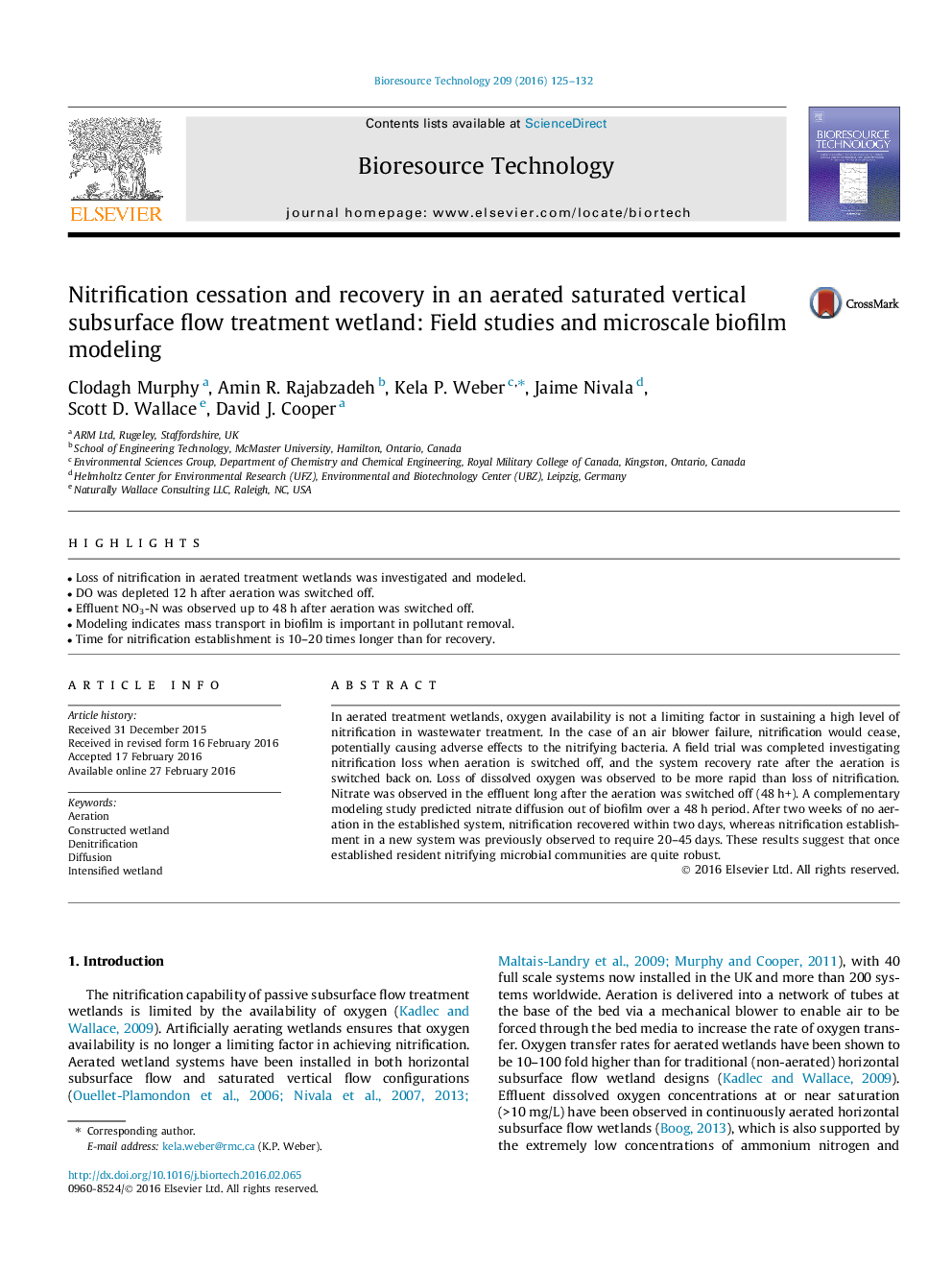| کد مقاله | کد نشریه | سال انتشار | مقاله انگلیسی | نسخه تمام متن |
|---|---|---|---|---|
| 679176 | 1459934 | 2016 | 8 صفحه PDF | دانلود رایگان |
• Loss of nitrification in aerated treatment wetlands was investigated and modeled.
• DO was depleted 12 h after aeration was switched off.
• Effluent NO3-N was observed up to 48 h after aeration was switched off.
• Modeling indicates mass transport in biofilm is important in pollutant removal.
• Time for nitrification establishment is 10–20 times longer than for recovery.
In aerated treatment wetlands, oxygen availability is not a limiting factor in sustaining a high level of nitrification in wastewater treatment. In the case of an air blower failure, nitrification would cease, potentially causing adverse effects to the nitrifying bacteria. A field trial was completed investigating nitrification loss when aeration is switched off, and the system recovery rate after the aeration is switched back on. Loss of dissolved oxygen was observed to be more rapid than loss of nitrification. Nitrate was observed in the effluent long after the aeration was switched off (48 h+). A complementary modeling study predicted nitrate diffusion out of biofilm over a 48 h period. After two weeks of no aeration in the established system, nitrification recovered within two days, whereas nitrification establishment in a new system was previously observed to require 20–45 days. These results suggest that once established resident nitrifying microbial communities are quite robust.
Journal: Bioresource Technology - Volume 209, June 2016, Pages 125–132
